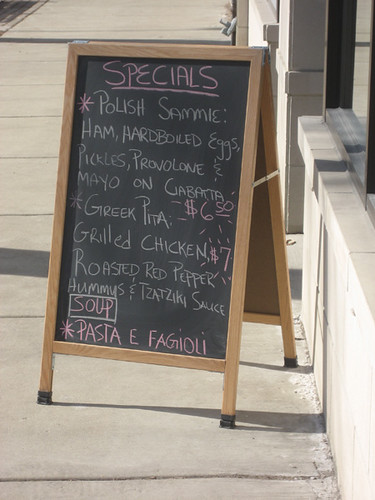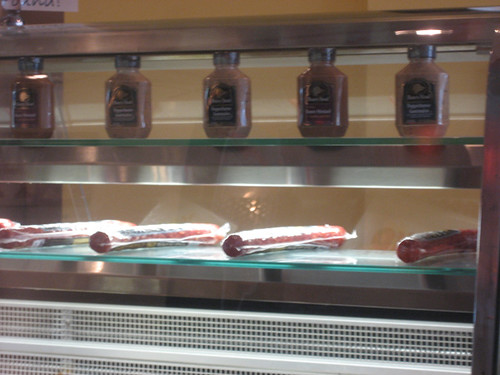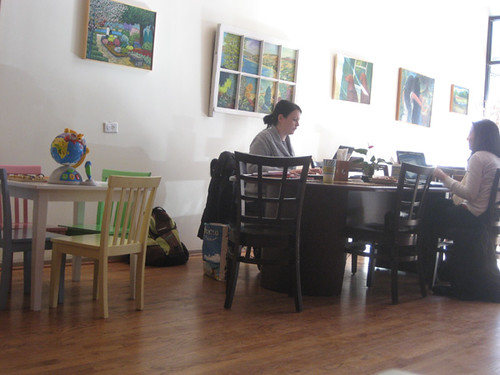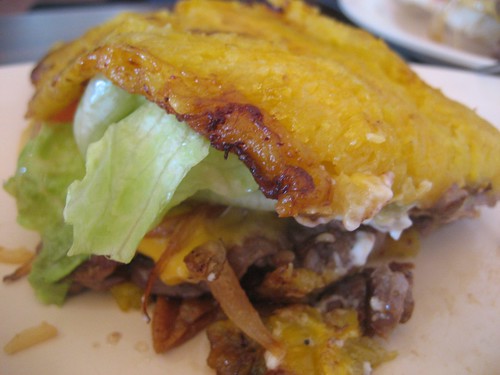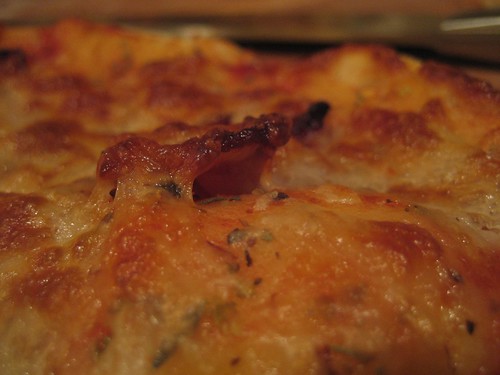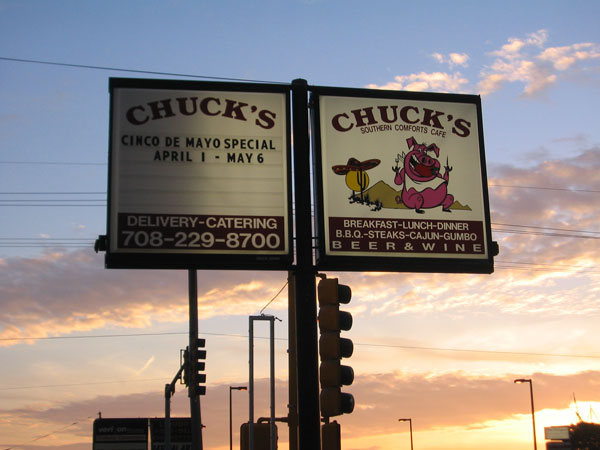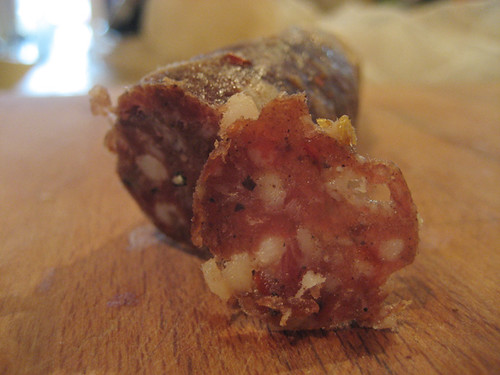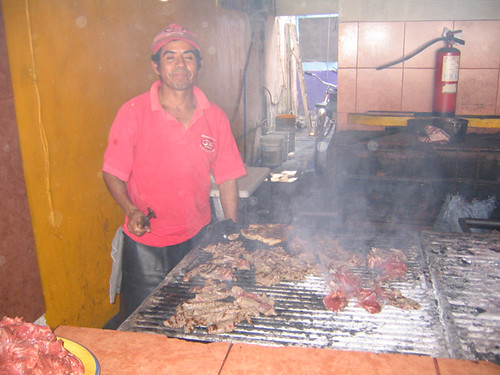
HC Monterrey, Playa del Carmen, Mexico.
The tourist district of Playa del Carmen was just a few blocks behind me, but already I was in a different Mexico, dusty and built out of crumbling plaster. I couldn’t see it ahead, the place I’d heard about, but suddenly I could smell it, sizzling beef on the air. I walked into the butcher shop and there was a counter where they sold the goods— but mainly there was a grill, the size of a double bed, smoke rising from it as a couple of guys with tongs threw long, jagged pieces of meat onto the grill. The smell of arrachera, skirt steak, was manly and primal, and a few dollars’ worth of pesos bought me a hunk of still sizzling meat with the barest of accompaniments— a baked potato and some limes. It was maybe the greatest beef experience of my life.
* * *
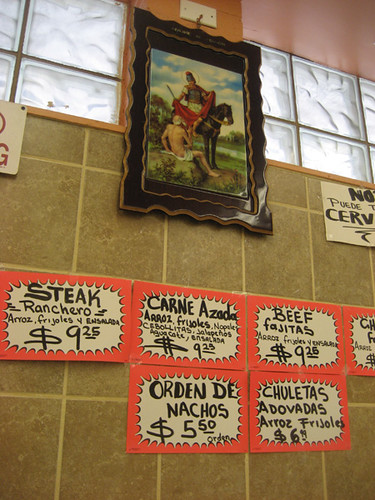
Los Potrillos, Chicago.
Lots of grocery stores have a place to grab a bite in them, whether it’s slice pizza at Dominick’s or the full-fledged food court at the Kingsbury Whole Foods. But there’s a unique character to the taquerias inside Mexican markets— partly it’s that you can tell they want to show off the meat counter’s goods in the best light to encourage sales, like that butcher shop in Mexico did; partly it’s the social side, the fact that a market is something of a community gathering place, like a Mexican town square, especially on weekends when they expand their menus to include specials like birria and menudo. Whatever the reason, they’re only about a million times livelier than their wan equivalents in American groceries, and they make for an immersive experience in Chicago’s Mexican culture. In some ways they’re about the most authentic Mexican eating experiences in town, at least in the sense that they’re making the fewest concessions to the gringo trade in terms of menu items or English on the signage.
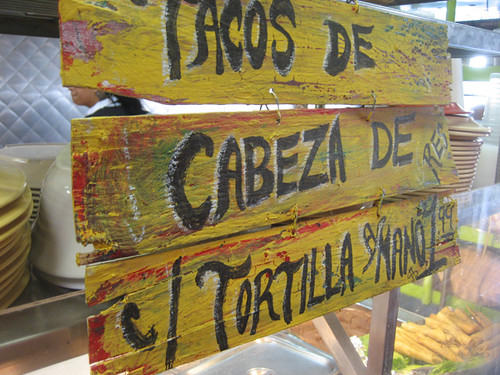
Taqueria Ricardo.
Which is not to say they’re all the same— in fact, they have many different characters and feels. Some are big bustling cafeterias with lines of guisados (stews) or gorditas frying; others are like corner diners, a few stools lined up in front of a grillman as he works in a cloud of meat smoke. Although tacos de carne asada, steak tacos, are the universally standard menu item and seem to account for half the business at any taqueria, beyond that there are plenty of regional variations which seem to suggest that Chicago’s Latino neighborhoods are in turn reflecting Mexican regional differences. For instance, on the northwest side (which besides Mexicans includes many South Americans) rotisserie or grilled chicken is an important item, and a cafeteria line of guisados is often found. While on the south side, handpatted tortillas (tortillas heche a mano) and skilled tortilla-makers visibly at work on the line are the center of attention.
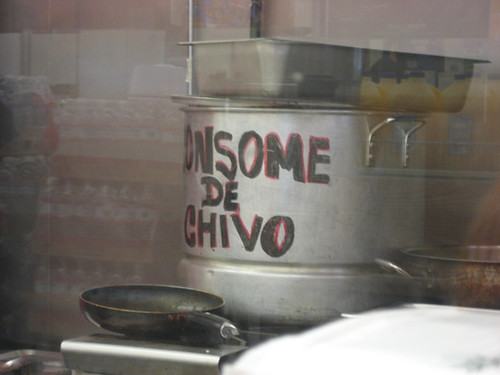
Los Potrillos.
For the last few months, I’ve been scouting out and sampling supermercado taquerias around town whenever lunchtime presented me with the desire for Mexican food. To be honest, I felt like I had fallen into a bit of a rut in my Mexican dining, eating at the same few places, a not uncommon ailment even among foodies, and this gave me an entire new subcategory, largely uncharted, to use to compel myself to try new places. Only one Mexican supermercado taqueria is widely known in the Chicago foodosphere: Wicker Park’s Tierra Caliente, formerly Carniceria Leon, famous for some of the best tacos al pastor (the real kind, on the gyros-style cone) in town. My initial thought was, here was an opportunity to find a place that might even surpass Tierra Caliente at the thing it’s famous for. Ironically, that’s the one thing I didn’t really do; as it turns out, only one of the other supermercado taquerias I found actually serves pastor on a cone at all, and though it’s every bit as good as Tierra Caliente’s, I’m still happy to say that if you want pastor, Tierra Caliente is the logical place to try first.
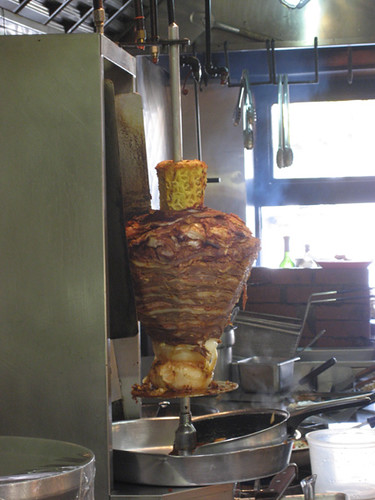
Pastor spit at Taqueria Ricardo.
But I found so many other interesting things that it hardly mattered. What follows below is my notes on more than a dozen supermercado taquerias all around town. Typically, I tried carne asada tacos on the first visit, because that seemed an easy standard for comparison between places that cared enough to try harder and places that didn’t; but if there was any reason to think they emphasized something else, I tried that instead, and aimed in general to sample the various restaurants’ strengths. (As has been noted on LTHForum, one of the challenges for these places is that since they’re cranking out food in quantity rather than to order, you have to time your visit well for the peak experience— for instance, steak tacos are best at lunch rush, when turnover is high and you have the best odds for getting steak fresh off the fire; but tacos al pastor are better a little off peak hour, when your meat has time to really crisp up in the gyros machine. And of course, if there isn’t a gyros machine, take a pass on pastor— fried in a pan is common, but nowhere near as good.)

Carne asada tacos, Los Potrillos.
* * *
After I had compiled a list of about a dozen places or so, I arranged an LTHForum event at three of the best, which took place this past Saturday. Besides wanting to introduce my finds to more people, I was eager to visit some of them in a larger party that would allow me to explore their menus in greater detail. So if you’re interested in checking some of these taquerias out, I’d recommend these three first as not only three of the best but offering a good cross-section of the scene and what’s to be had at different places. Our first stop was Los Potrillos:

This is a small taco grill that really does first-rate steak tacos, cecina tacos, etc., thanks to an excellent grillman who serves good quality meat hot and juicy off the grill in big, tender chunks. We also ordered the consomme de chivo which had impressed me on an earlier visit, though it was kind of watery and not as exciting this time— maybe it would have been better after cooking down for another hour or two. (The pot on which Consomme de Chivo is painted in big letters was curiously missing as well.)
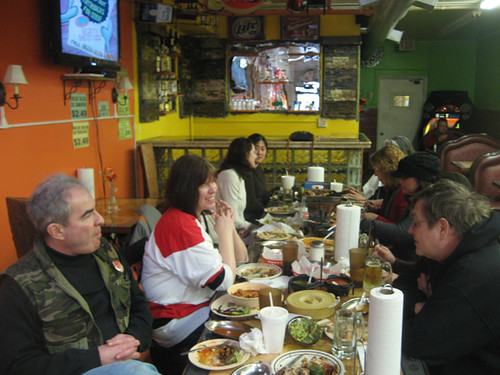
Next was Taqueria Ricardo. Besides the best atmosphere (you wouldn’t necessarily know you were in a supermercado at all, as it’s pretty separate), a ramshackle riot of tile that suggests the over-the-top exuberance of Mexico, this has such an extensive menu that we wound up really having a full (very full) lunch here. Chicken grilled over live fire was a star here, but so were pastor tacos served at the peak of grilled crispiness, an excellent green salsa-poblano tamale, a lively caldo de siete mares (soup of the seven seas) with a big langoustine plopped right in it, a weekend special of barbacoa de res, and more. (Though one I wouldn’t recommend was David Hammond’s choice of pickled pig’s feet, which proved that there is a lot of fat and not much meat on a pig’s foot.) This is really a great Mexican restaurant in both food and atmosphere, which deserves wider attention and discovery.
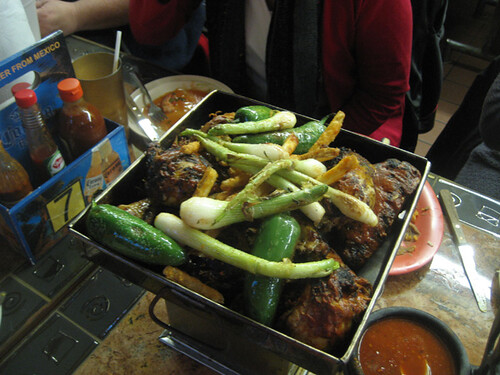
Taqueria Ricardo; above: chicken over heater, below: caldo de siete mares, pickled pigs’ feet.
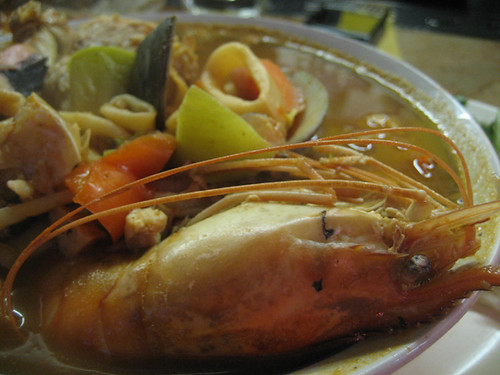
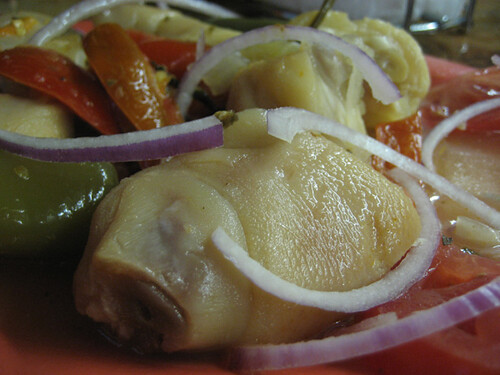
Finally we headed down to La Villita to Carniceria Aguascalientes, which has a large cafeteria-style area built on the handmade gorditas that are its star attraction. Pork in red and green salsas and a poblano-cheese filling all proved to be worthy fillings for the wonderfully warm and nurturing freshly-fried gorditas.
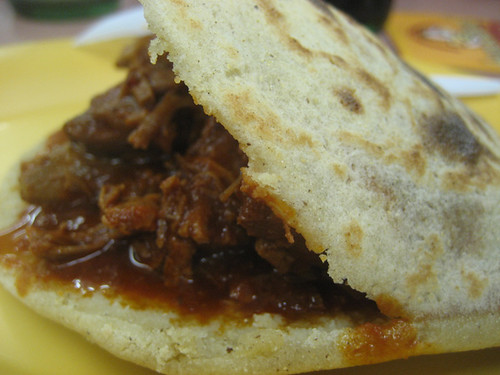
Thanks to all who came along with me on Saturday and I hope many more will follow in our footsteps, discovering one of the last frontiers of ethnic food experience in Chicago. Now here’s my list:
FAR NORTH
Chapala Taqueria
7117 N. Clark
An attractive modern grocery whose taqueria stresses pollo asado al carbon, char-grilled chicken. It was indeed first-rate, with a subtly seasoned outside (not just Goya Sazon) and cooked well; carne asada was fine if not first-tier. Weekend specials, including carnitas and menudo, would be worth checking out.

Chapala Taqueria.
Supermercado Carreta
6906 N. Clark
If you have an elderly aunt who wants to try a supermercado taqueria, this one is easily the spiffiest and most friendly to the hygiene-obsessed in its area, and the menu pictures on the wall looked promising. But a gordita with carne asada was fatally bland, flavorless masa and the meat smothered in lettuce, chese and crema. Deserves another try from another part of the menu, but disappointing.
Supermercado Almita
5957 N. Clark
This little grocery with a tin ceiling and wooden shelves has a 1927-in-amber decrepitude that will either charm you or creep you out; I was charmed by the two ladies running it, watching Mexican soaps as one of them made me a homey, but perfectly decent, steak taco.
NORTHWEST
Taqueria Ricardo
4429 W. Diversey
Easily my favorite find to date; I can’t think of another Mexican restaurant in Chicago that so captures the ramshackle charm of Mexico itself, from the over the top tilework to the grill haphazardly stacked on top of its burning wood. The menu is wildly diverse, ranging from seafood to grilled chicken adobo and rabbit. Carne asada is good and the pastor is flavorful with lots of pineapple dripping down. Wood smoke means the chicken is outstandingly flavorful, and the presentation of a whole chicken on a metal stand is impressive. A milanesa torta was freshly fried and the bread was toasted, both good signs. Though the guisados were hit (chicken in green salsa) and miss (chicharron), a weekend special of barbacoa de res was excellent, and so was a tamale of poblano and cheese. Among the seafood items, the caldo de siete mares was very nice, impressively decked with a whole langoustine, but a shrimp cocktail, though the shrimp were of nice quality, was way too sweet. In summer I’ve also seen them grilling in the parking lot.

Los Potrillos
3624 W. Belmont
With religious iconography on the walls, this tiny taqueria has a real step-out-of-Chicago feel. Good quality beef, cooked to be tender and juicy by an expert grillman, makes the carne asada tacos and cecina tacos some of the best in the city. But my favorite find on my first visit was the weekend special of consomme de chivo, goat soup, which had big chunks of goat in a great ancho broth.
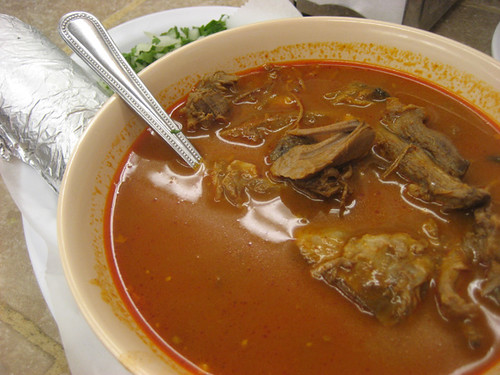
Carniceria Jimenez
3840 W. Fullerton/others
I can’t speak to other outposts of this grocery chain, but with its decor of old radios and vintage Mexican movie stars like Pedro Infante, this taqueria bizarrely comes off like the Burt’s Pizza of supermercado taquerias. For some odd reason I ordered a torta milanesa, which looked textbook-correct but was kind of less than the sum of its parts; the better looking things are the guisados.
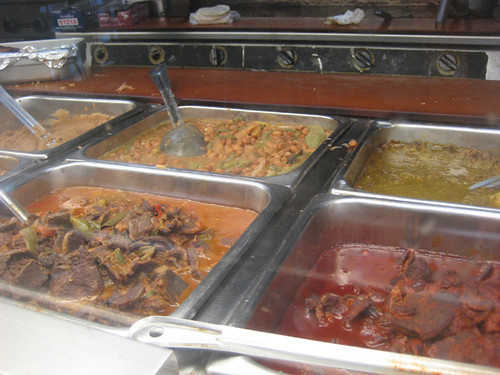
Guisados at Carniceria Jimenez.
El Gigante
2500 N. Laramie
Not gigante at all, but this small market with a new taqueria has neon in the window to announce Barbacoa and Carnitas on weekends, which is promising. A weekday steak taco had good, tender beef, but was undercut by rubbery tortillas…
Carniceria y Taqueria La Loma
2535 N. Laramie
…while infinitely better tortillas were a strong point across the street; the steak seemed slightly cheaper (and cut to tiny bits) but it was greasy and salty in all the right ways. Pastor was given pride of place on the menu, so even though no cone was visible, I fell for it, and was reminded once again: If you don’t see a cone, leave the pastor alone!
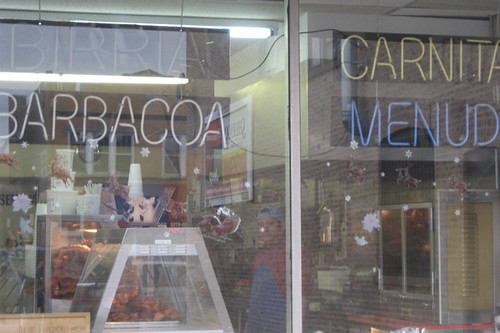
El Gigante.
NEAR NORTH
Carniceria Guanajuato
Multiple locations
This grocery chain is one of the easiest supermercado taquerias to find, but I’ve never had anything at the taqueria I thought was better than okay, though I’m sure quality varies by location. Still, in the case of the 1436 N. Ashland location, it would be a shame to come here over Tierra Caliente.
Tierra Caliente
1402 N. Ashland
The former Carniceria Leon is the one supermercado taqueria widely known to gringo foodies, complete with Dolinsky icon. It also has the highest ratio of taqueria to grocery, suggesting where their attention really lies. The star attraction is unquestionably the pastor, which if you get it at the right moment (a little after lunch rush) is a perfect blend of crispiness and juiciness, and a contender for best in the city. But LTHers have identified other notable items such as the gordita de chivo and weekend carnitas.
Danny’s Fresh Market
2140 N. Western
You’d think proximity to possibly the best steak tacos in the city, Las Asadas, would step up your game, but everything about Danny’s was dingy and tired; a pork guisado had the taste of seasonings that expired in 2005, and a steak taco came with purple (!) onion, lettuce tomato and mayo, giving it an unmistakable eau de Whopper.
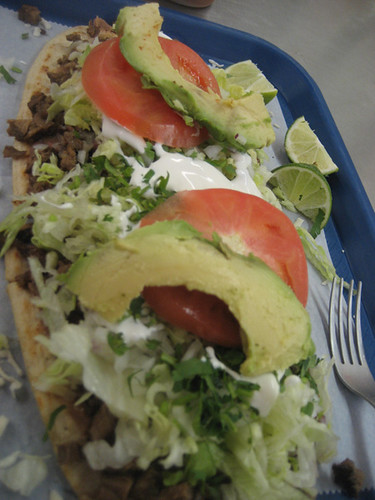
Huarache at Laura.
Carniceria y Taqueria Laura
1051 N. Ashland
The enormous huarache I got, piled high with lettuce, starchy winter tomato, avocado and crema, looked like a monstrosity, and the fact that both meat and huarache were reheated seemed a second strike. Then I bit into it— and was surprised how good it was. The steak was full of flavor and the huarache toothsome and comforting. This place is surely overlooked due to the three La Pasaditas being just up the street (though Vital Info praised it in a long-ago Pasaditathon on Chowhound), but it deserves more attention and a return from me.
SOUTH SIDE
Carniceria Aguascalientes
3132 W. 26th St.
This meat market located near the La Villita gate has a large open dining and cooking area in 50s diner white tile, which serves to point attention to the main attraction: a woman hand-patting gordita shells and laying them out in neat rows. Everything benefits from the toothsome, comfort-foody appeal of the piping hot masa shell, but that’s not to slight well-grilled steak or the complex spiciness of a pork guisado, only two of many choices.
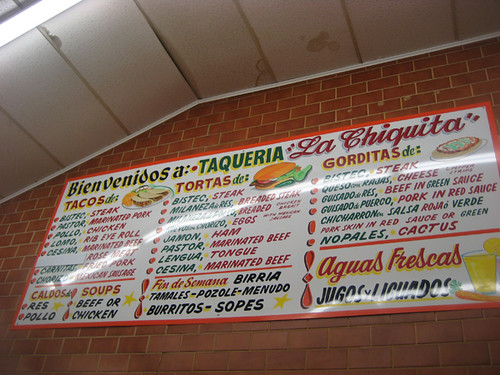
La Chiquita
3555 W. 26th St./2637 S. Pulaski/others
Big, bustling supermarkets on the south side and in suburbs like Cicero and Aurora, these have functional-looking taquerias inside whose main attraction is handmade gorditas, sopas, etc. (Pulaski’s is much nicer, but seemed deader, than 26th St.’s 70s throwback.) Fresh masa made for a very good gordita with pork in red sauce at the 26th street location, though I’d still choose Carniceria Aguascalientes for that first.
Jerry’s Certified
4524 S. Ashland
I came here at off-peak hours, so it was kind of dead like a coffeeshop at three in the afternoon, but I have a feeling that at prime time on weekends, this is an exciting place. There are lots of good signs (literally), with weekend specials like chile rellenos and caldo de siete mares (seafood soup). The emphasis of the everyday menu seems to be on the tortas, and the torta milanesa I had was exemplary; on the other hand, it was one of the only places where I got gringo’d on a steak taco and it arrived with lettuce, tomato and cheese.

Carniceria y Taqueria La Loma.

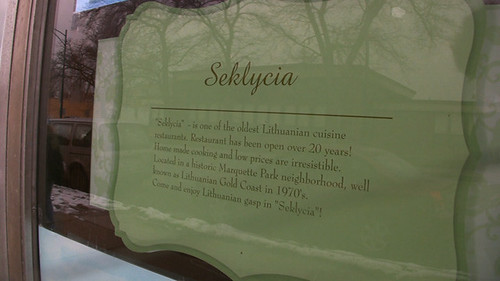


 Posted in
Posted in 
